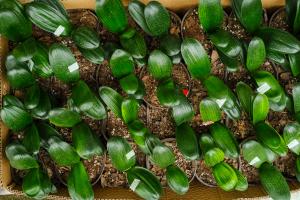How to Lower pH in Plant Water
Keeping a stable pH level is crucial for the growth and health of plants. But if the pH level of your plant water is too high, your plants may struggle to absorb nutrients and suffer from other problems. Luckily, there are several solutions to lower the pH level of your plant water. Here are some effective methods:
1. Use Vinegar
Vinegar is a common household item that can lower the pH level of plant water. You can use either white vinegar or apple cider vinegar. Mix one tablespoon of vinegar per gallon of plant water and test the pH level after 24 hours. Repeat the process until you achieve the desired pH level.
2. Add Citric Acid
Citric acid is a natural acid that can lower the pH level of plant water. You can use either fresh lemon juice or citric acid powder. Mix one tablespoon of either lemon juice or citric acid powder per gallon of plant water and test the pH level after 24 hours. Repeat the process until you achieve the desired pH level.
3. Use Sulfur
Sulfur is a common soil amendment that can also lower the pH level of plant water. You can use either elemental sulfur or iron sulfate. Mix one tablespoon of either sulfur product per gallon of plant water and test the pH level after 24 hours. Repeat the process until you achieve the desired pH level.
4. Use pH Down
pH Down is a commercial product that is specifically designed to lower the pH level of plant water. It is available in both liquid and powder forms. Follow the instructions on the label for the correct dosage, and test the pH level after 24 hours. Repeat the process until you achieve the desired pH level.
5. Use Reverse Osmosis Water
If your tap water is too hard or alkaline, you may need to use reverse osmosis water to lower the pH level of your plant water. Reverse osmosis water is filtered to remove impurities and minerals that can affect the pH level. You can purchase reverse osmosis water from a local store, or invest in an at-home reverse osmosis system.
6. Monitor pH Levels Regularly
Regularly monitoring the pH level of your plant water is important to ensure that it stays within the optimal range for your plants. Use a pH meter or pH testing kit to test the pH level of your plant water on a regular basis. If the pH level is too high, use one of the above methods to lower it.
In conclusion, lowering the pH level of your plant water is crucial to ensure the health and growth of your plants. There are several effective methods to lower the pH level, such as using vinegar, citric acid, sulfur, pH Down or reverse osmosis water. Remember to monitor the pH level regularly to ensure the best results.

 how many times do yo...
how many times do yo... how many planted tre...
how many planted tre... how many pine trees ...
how many pine trees ... how many pecan trees...
how many pecan trees... how many plants comp...
how many plants comp... how many plants can ...
how many plants can ... how many plants and ...
how many plants and ... how many pepper plan...
how many pepper plan...





























